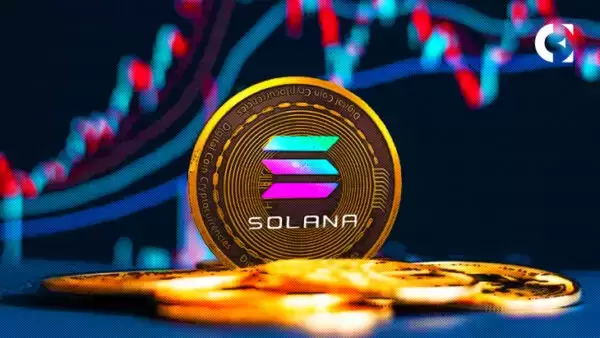 |
|
 |
|
 |
|
 |
|
 |
|
 |
|
 |
|
 |
|
 |
|
 |
|
 |
|
 |
|
 |
|
 |
|
 |
|
Cryptocurrency News Articles
Solana's compute unit (with) debate limit: simd-0207 vs. SIMD-0256
Apr 01, 2025 at 08:10 pm
As the network experiences burgeoning adoption and escalating transaction volumes, a critical debate has ignited within its community: the CU limit.
Solana, the high-throughput blockchain known for its rapid transactions, low costs, and fast finality, is reaching a pivotal juncture as it experiences burgeoning adoption and escalating transaction volumes. This surge in activity has brought to light a critical point of contention within the Solana community: the Compute Unit (CU) limit.
Currently, the maximum CUs that can be used per block is 48 million. However, there are proposals to increase this limit to either 50 million (SIMD-0207) or 60 million (SIMD-0256). This debate, while technical in nature, holds profound implications for Solana’s future, potentially reshaping its scalability, decentralization, and overall reliability.
To fully grasp the gravity of this discussion, it is essential to understand the role of CUs in the Solana ecosystem. CUs, similar to Ethereum’s gas fees, denote the computational resources consumed during transaction processing and smart contract execution. Each transaction on Solana requires a certain number of CUs, with more complex operations like DeFi transactions and NFT mints demanding significantly more resources than simple token transfers.
The CU limit serves as a critical mechanism for maintaining network equilibrium, ensuring efficient and fair resource allocation. It prevents any single user or application from monopolizing computational power, thereby sustaining the network’s decentralized nature. By regulating the amount of work that can be performed within a block, the CU limit also directly influences the network’s transaction throughput.
Under typical usage patterns, Solana has performed remarkably well with the 48 million CU limit. However, as the network’s user base expands and transaction demand surges, especially during high-traffic events, the network has encountered congestion. This congestion can lead to transaction delays, failures, and even outright drops, ultimately impacting user experience.
To mitigate these issues and enhance Solana’s scalability, there is an ongoing discussion on whether to increase the CU limit. The goal is to boost transaction throughput and reduce transaction delays, which are common occurrences, especially during periods of high network activity.
Two primary proposals have emerged to address this critical issue: SIMD-0207 and SIMD-0256. Both proposals share the common goal of improving user experience by increasing transaction throughput and reducing delays. However, the debate is not without its trade-offs, as increasing the CU limit can place additional strain on validators and node operators.
The potential benefits of elevating the CU limit are significant, presenting several advantages for the Solana ecosystem, especially in terms of scalability, user experience, and developer adoption.
On the other hand, the potential trade-offs must be carefully considered. While the benefits are clear, the trade-offs should not be ignored in this critical discussion.
Generally, the Solana community favors a gradual approach to scaling the network. Developers and validators have expressed concerns about implementing drastic changes, such as the previously considered 96 million CU limit.
The proposed increases to 50 million or 60 million CUs per block represent a more measured approach. By incrementally raising the CU limit, Solana can assess the effects on network performance and make necessary adjustments. This approach would mitigate risks and ensure network stability.
The debate surrounding the CU limit represents a critical moment in Solana’s evolution. The decision to increase the limit will have long-term implications for the network’s scalability, performance, and decentralization.
If handled judiciously, this change could solidify Solana’s position as a leading blockchain platform. However, mishandling the situation could lead to network instability and undermine its core principles.
As the discussion continues, the cryptocurrency community watches closely, anticipating how Solana will navigate this critical decision and shape its future in the blockchain space.
Disclaimer:info@kdj.com
The information provided is not trading advice. kdj.com does not assume any responsibility for any investments made based on the information provided in this article. Cryptocurrencies are highly volatile and it is highly recommended that you invest with caution after thorough research!
If you believe that the content used on this website infringes your copyright, please contact us immediately (info@kdj.com) and we will delete it promptly.


























































